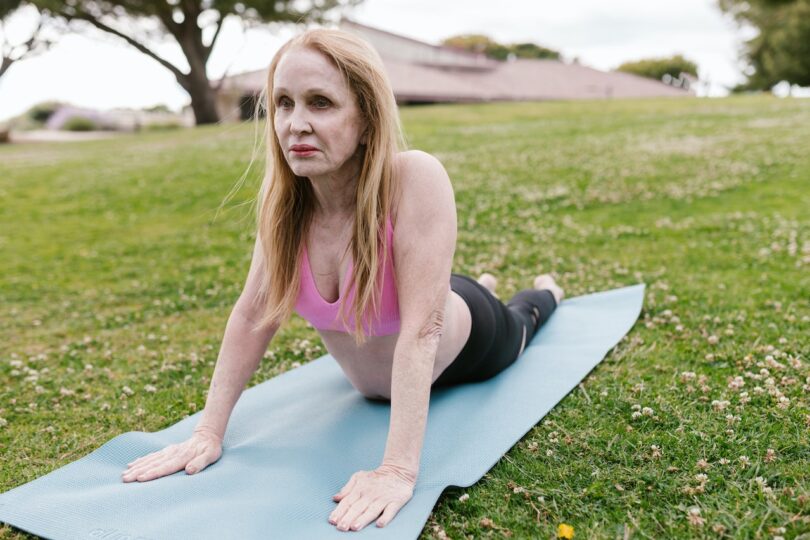Physical therapy is an essential form of treatment for seniors facing a wide range of physical challenges. It helps to relieve pain, improve mobility, and prevent injury. However, traditional physical therapy methods can be tedious and time-consuming for older adults. Yoga provides a unique alternative that can be just as effective, if not more so, in promoting physical wellness for seniors.
In this article, we’ll explore the benefits of Yoga for seniors and how it can be used as an alternative to traditional physical therapy methods.
Yoga for Seniors: The Benefits
Yoga is a low-impact form of exercise that can be easily modified to suit the needs of older adults. It combines physical postures, breathing exercises, and meditation to promote overall wellness. For seniors, practicing yoga can offer a range of benefits, including:
- Improving flexibility and balance: Yoga can help to increase flexibility and improve balance, reducing the risk of falls.
- Relieving pain: Yoga can help to relieve chronic pain, particularly in the back, neck, and joints.
- Increasing muscle strength: Many yoga postures focus on building core strength and toning muscles, which can help seniors maintain mobility and independence.
- Reducing stress and promoting relaxation: Yoga incorporates breathing exercises and meditation, which can help seniors relax, reduce stress, and improve sleep.
Using Yoga as an Alternative to Traditional Physical Therapy
One of the major benefits of using yoga as an alternative to traditional physical therapy is that it can be practiced in the comfort of one’s own home, without the need for expensive equipment or a gym membership. Additionally, yoga can be easily modified to accommodate individual needs and physical abilities, making it a suitable option for seniors of all fitness levels.
Here are a few tips for seniors interested in using yoga as an alternative to traditional physical therapy:
- Start slow: Begin with easy postures and gradually increase the level of difficulty as your body becomes stronger.
- Use props: Yoga props, such as blocks and straps, can be used to help seniors maintain proper form and gain the full benefit of each posture.
- Listen to your body: Pay attention to your body’s limitations and avoid any postures that cause pain or discomfort.
- Check with a doctor: Before starting a yoga practice, it’s important to check with a doctor to make sure it’s safe for you, particularly if you have any pre-existing health conditions.
Conclusion
Yoga is a great alternative to traditional physical therapy for seniors. It can help to relieve pain, improve flexibility, and increase strength and balance. Yoga’s emphasis on breathing and relaxation also makes it effective in promoting overall wellness, including reducing stress and improving sleep. And it can be done in the comfort of your own home, rather than visiting the gym or therapy center. Yoga’s adaptability also allows seniors of all fitness levels to participate. If you are a senior interested in using yoga to improve your physical health, it is important to check with a doctor before starting and to start slowly and listen to your body’s limitations. With the right approach, yoga can be an effective and enjoyable way to promote physical wellness in older adults.
In conclusion, Yoga for seniors, yoga for the elderly, and yoga for older people have significant physical and mental benefits. It is a low-impact form of exercise that can be easily modified to suit the needs of older adults. Yoga can help to increase flexibility and improve balance, relieve chronic pain, build muscle strength and reduce stress, promote relaxation, and improve sleep. By using yoga as an alternative to traditional physical therapy, seniors can improve their physical health and well-being in the comfort of their own homes.
Read Also :
- The Perfect Yoga Mat for Seniors: Gaiam Essentials Thick Yoga Mat Review
- Yoga for Seniors: A Gentle Way to Stay Active and Healthy
- Age is Just a Number: How Yoga Can Benefit Seniors at Any Age
Frequently Asked Questions:
Q: What are the benefits of yoga for seniors?
A: Yoga can help seniors to improve flexibility and balance, relieve chronic pain, increase muscle strength, and reduce stress and promote relaxation.
Q: Is yoga safe for seniors?
A: Yoga is generally considered safe for older adults, but it’s always best to check with a doctor before starting any new exercise program.
Q: What kind of equipment do I need for yoga?
A: Yoga can be done with minimal equipment, you will likely only need a mat or towel to provide cushioning for your joints and to practice on. Yoga props, such as blocks and straps, can be used to help seniors maintain proper form and gain the full benefit of each posture.
Q: How much experience do I need for yoga?
A: Yoga can be practiced by people of all fitness levels, including seniors who are new to exercise. It’s important to start slowly and listen to your body’s limitations.
Q: Can yoga be done at home?
A: Yes, Yoga can be practiced in the comfort of one’s own home, without the need for expensive equipment or a gym membership.
Q: Is yoga a replacement for physical therapy?
A: While yoga can provide many benefits, it may not be suitable for everyone and is not a replacement for physical therapy in some cases. If you are working with an injury, it’s always best to consult with your physician or a physical therapist before starting a yoga practice.








Leave a Comment